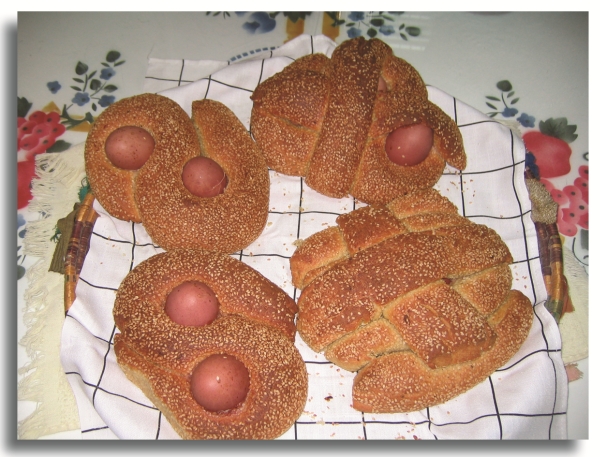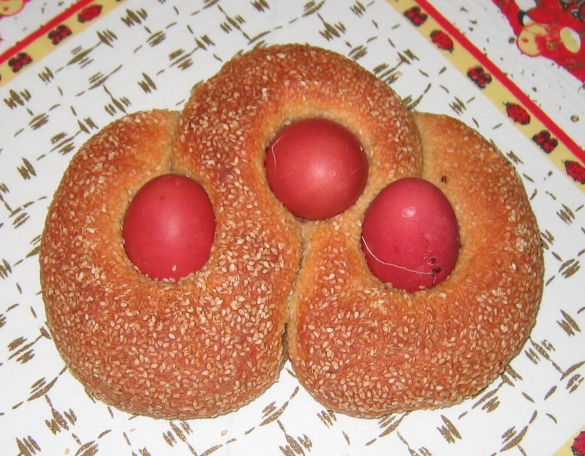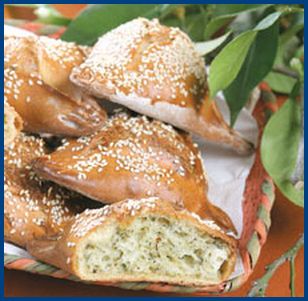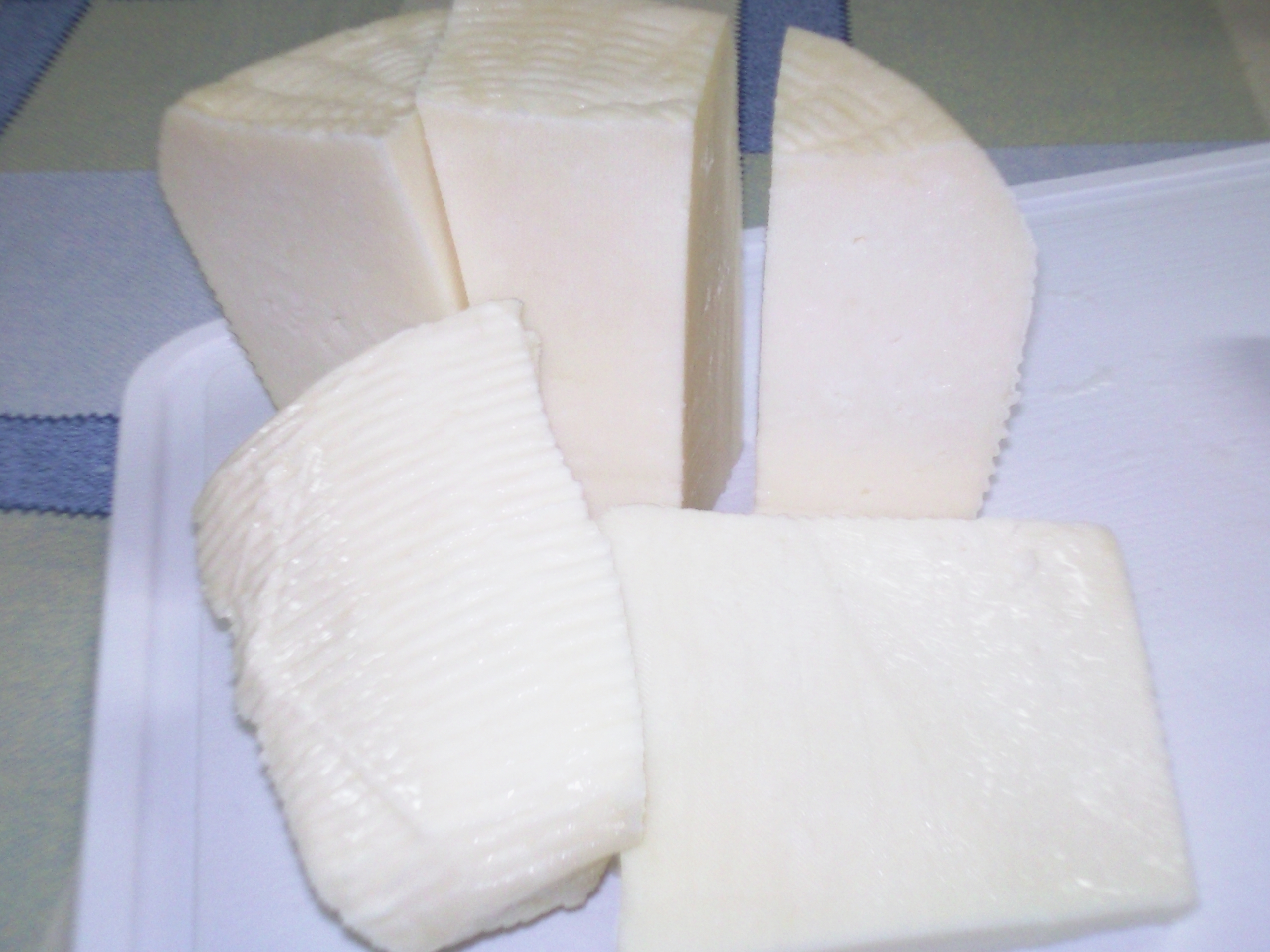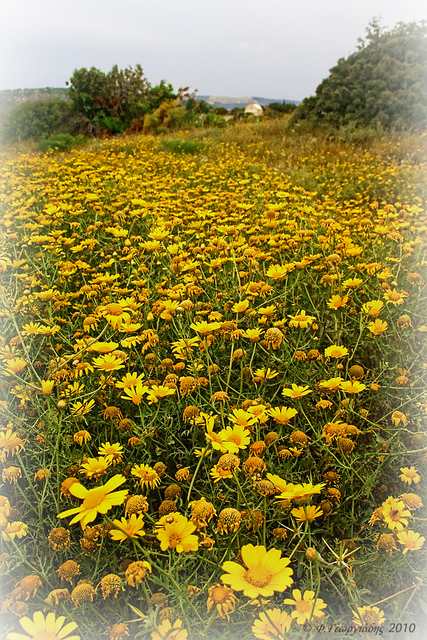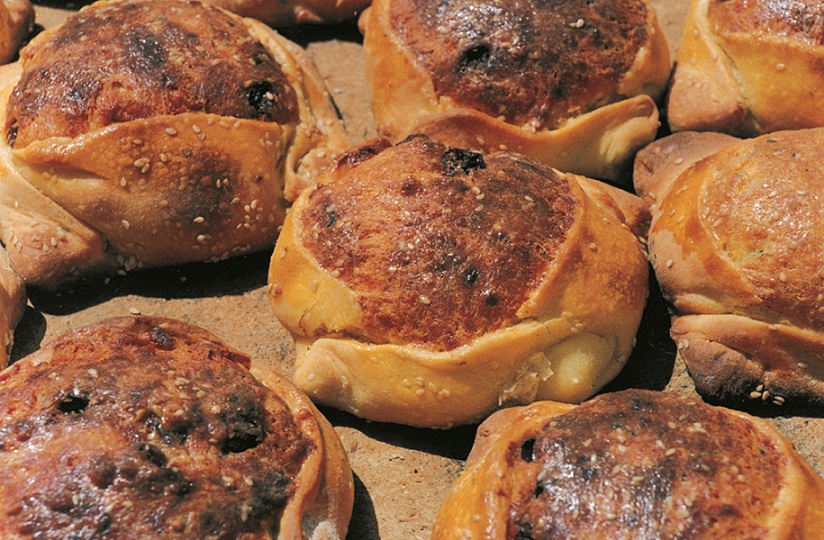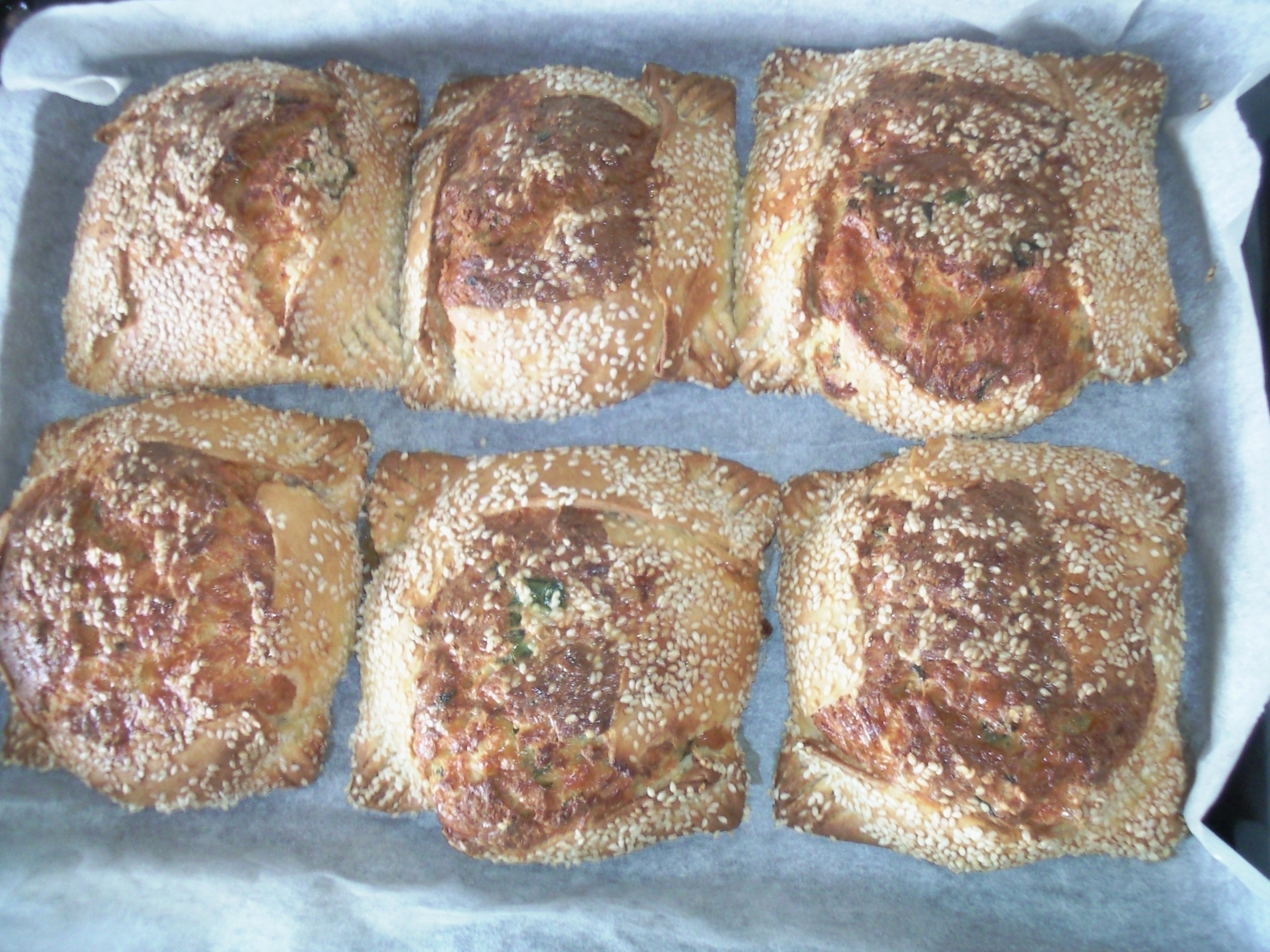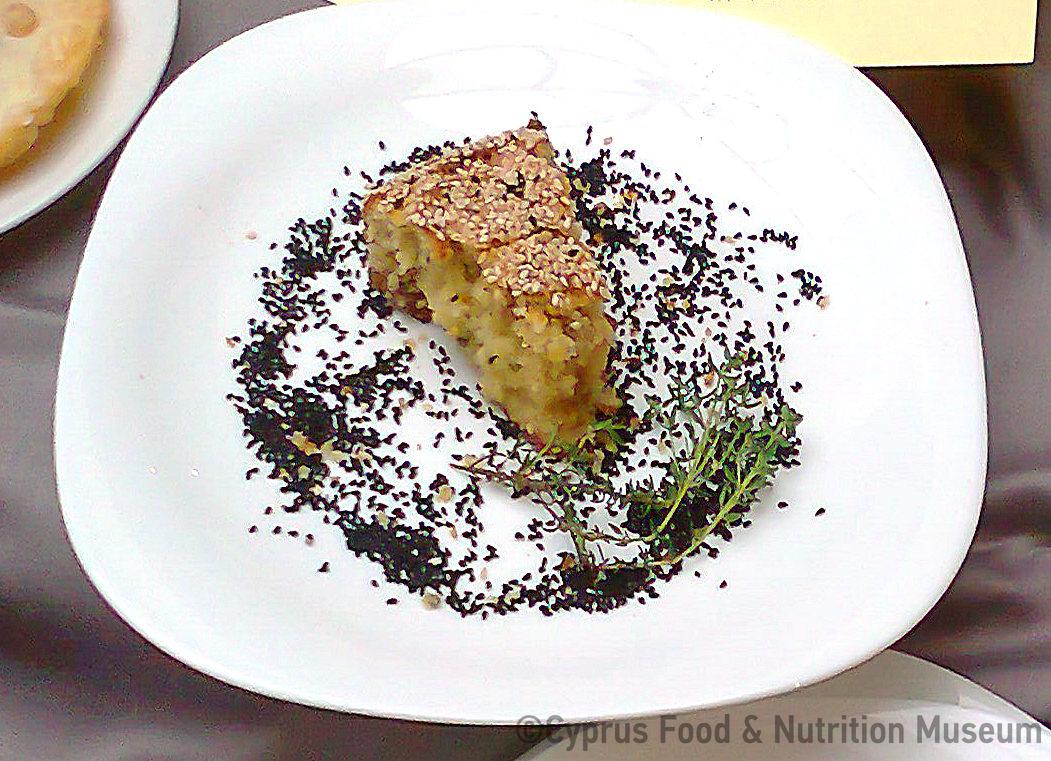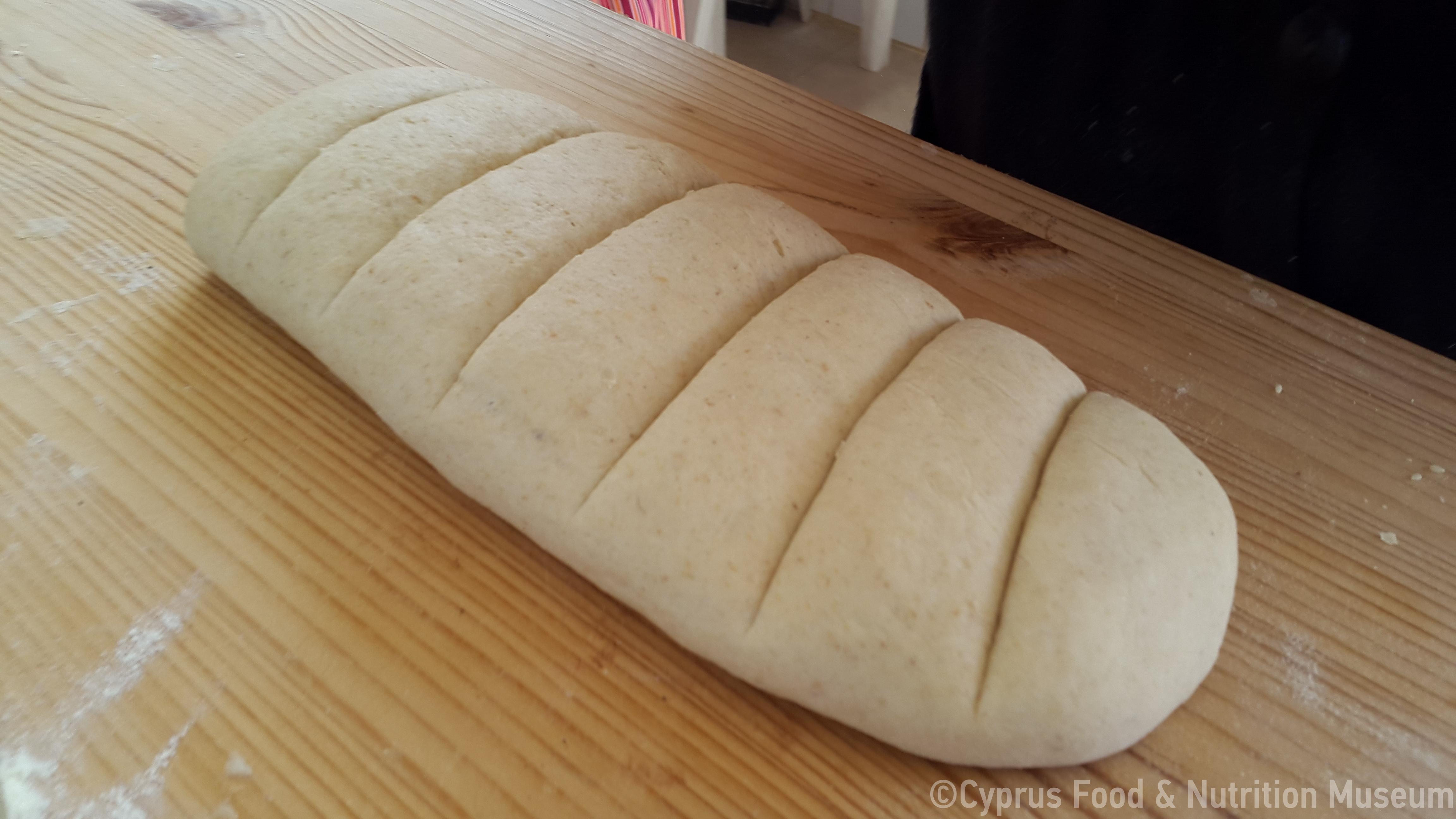Flaouna is a pie with a square, triangular or round shape, the basic ingredients of which are ‘flaouna cheese’ and eggs. Flaounes are baked all over Cyprus during Easter.
Name - Origin
Flaouna is a pie with a square, triangular or round shape, the basic ingredients of which are flaouna cheese and eggs. Flaounes are baked all over Cyprus during Easter.
According to Cypriot scholars, 'palathi', an ancient Greek fig pie is considered to be flaouna's ancestor. Its Roman version was called 'fladonis', while later the Anglo-Saxons called it 'flaon', today's 'flan' (Hadjioannou, 1993).
First, the 'foukos' (filling) is prepared. The cheese is grated, then it is mixed with eggs, sourdough starter and a small amount of semolina. It is enhanced with various spices (e.g. mahleb, mastic, spearmint and cinnamon) and sometimes raisins are added to it. Foukos is left overnight to proof. On the following day, the dough is prepared with a sourdough starter that has been worked from the previous night. The dough is rolled out into small pie size pieces, the 'foukos' is added on each piece and the edges of each pie are folded over the sides. Then. flaouna is brushed with a mixture of beaten egg and sesame seeds before it is baked.
Functional and symbolic role
Flaouna is offered as a treat. It is consumed warm or cold or as a rusk to accompany various beverages (such as herbal tea)
Flaouna is associated with several Easter customs
For Cypriots, flaouna is a resurrection symbol.
Additional information and bibliography
In the villages of Paphos, paskiés are prepared - a variation of flaouna containing pieces of fried meat with spices
Ministry of Agriculture, Natural Resources and Environment, Department of Agriculture (2010).Gastronomic Map of Cyprus, Nicosia, Press and Information Office, G.T.P. 379/2010-2.000
Stalo Lazarou.
